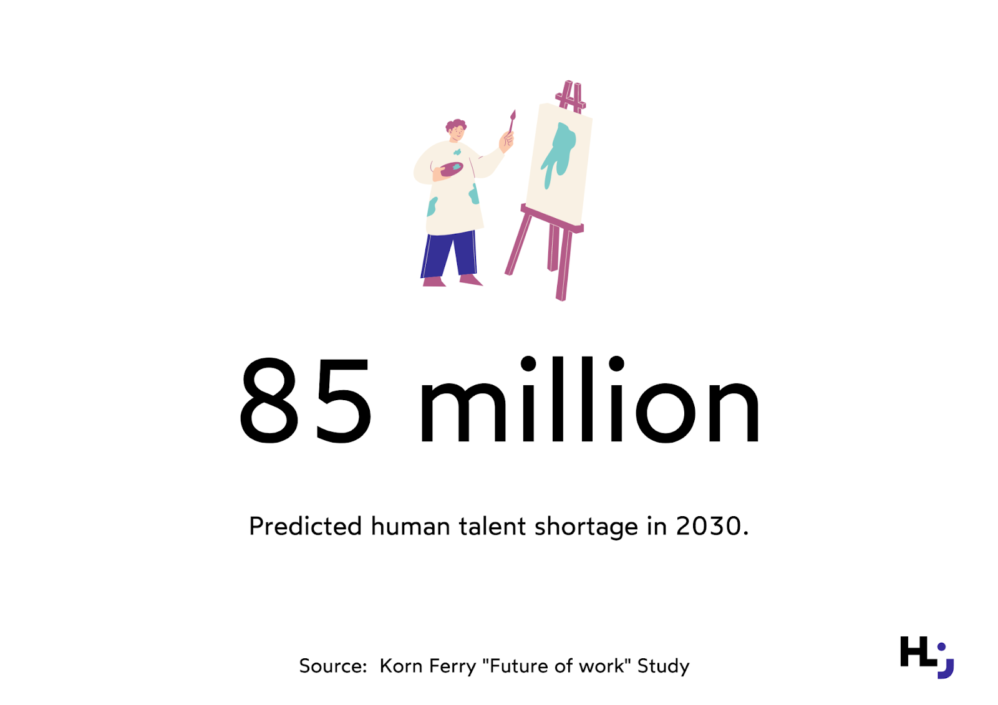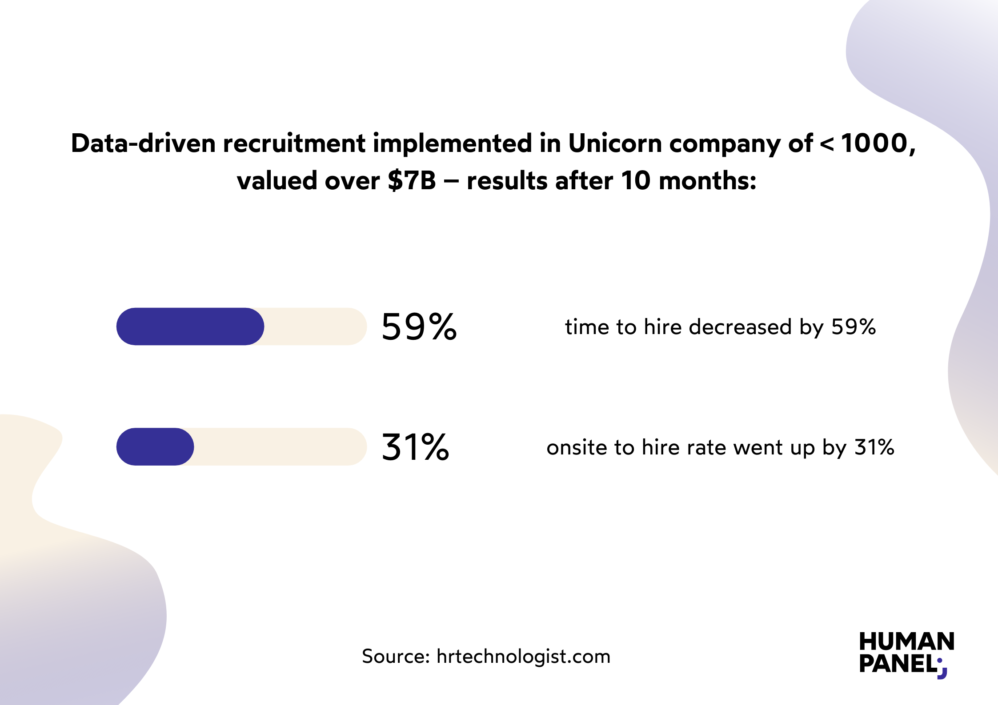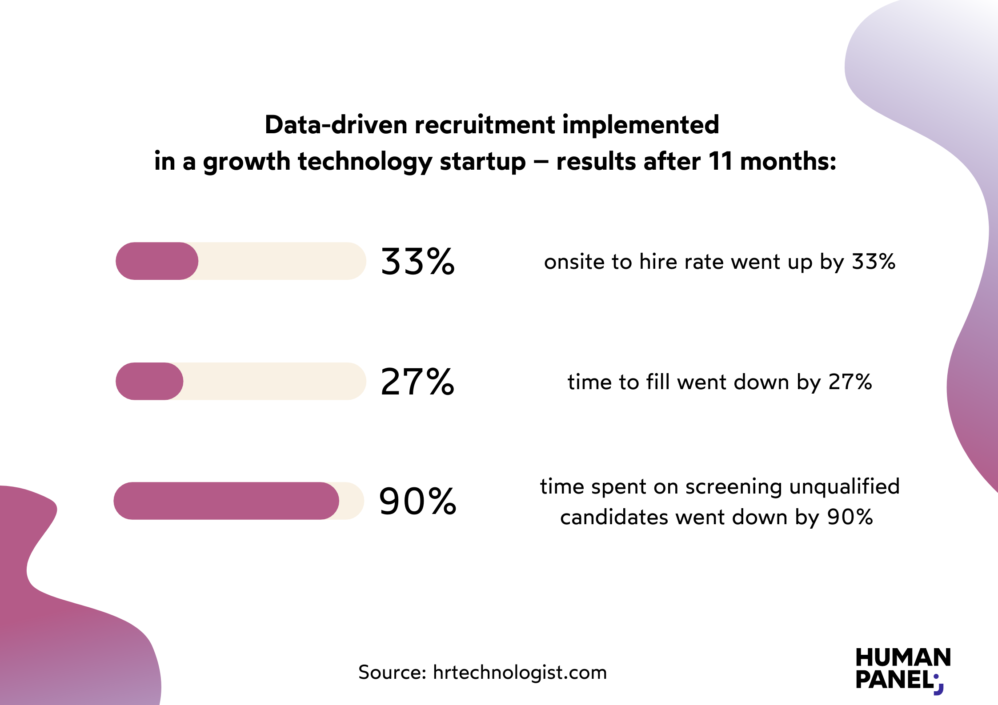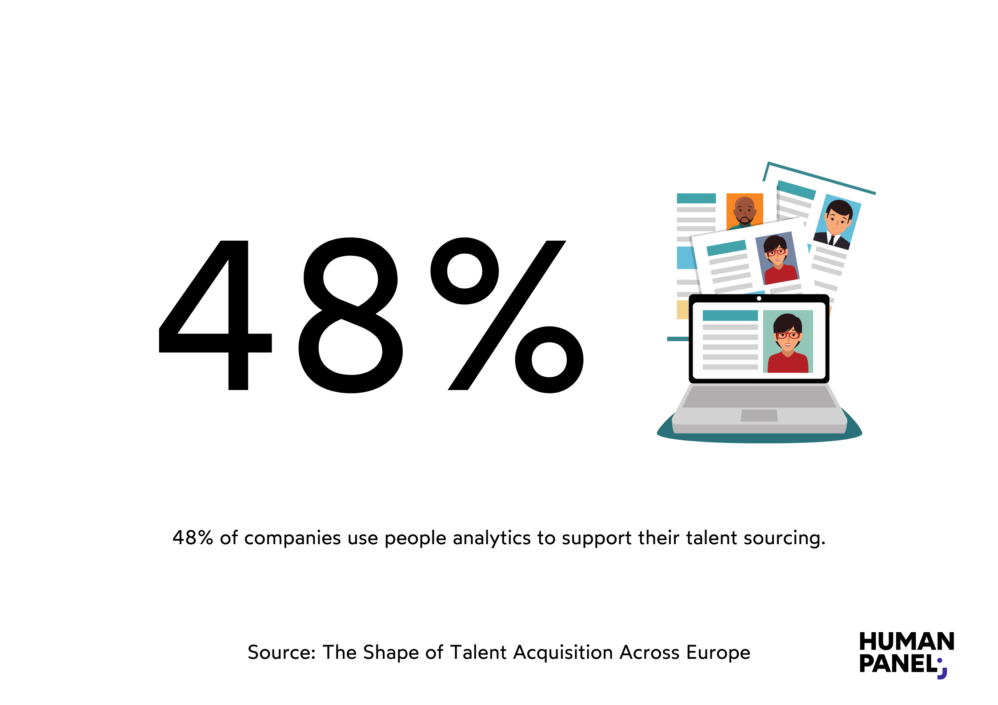Why do you need people analytics to win the war for talent?

How do you win the war for talent in the post-pandemic world? The ultimate answer may be: with data. Here’s why.
With access to a global pool of talent and digital transformation, recruiting might seem faster and easier. However, HR teams around the world admit that talent acquisition is more challenging now than ever. Some say we’re already experiencing the new “war for talent.” Losing it means companies can’t get the right skills and can’t innovate or pursue new opportunities. But there’s a secret weapon they can use: data.
What is the war for talent?
First, let’s define what the “war for talent” is. The term is not new. It was coined by Steven Hankin of McKinsey back in 1997. In 2001, Ed Michaels, Helen Handfield-Jones, and Beth Axelrod from McKinsey published a book called “The War of Talent.” They predicted that the ability to attract, develop and retain talent would be a critical issue for most companies.
And that’s what companies are experiencing right now. There are 8.1 million job openings in the U.S., which is the highest number in recorded history. A recent study has found that there will be a global talent shortage of more than 85 million people by 2030. Four out of ten small and medium-sized businesses in the U.S. report problems filling open positions.
“We are definitely experiencing a post-pandemic tide in the labor market,” points out Daniel Aduszkiewicz, the CEO and Co-Founder of Human Panel. But he explains that this is a natural consequence of 2020. So before we say why data and people analytics can be critical in this context, let’s have a quick retrospective.

Are we fighting a war for talent?
The first quarter of 2020 saw a hiring freeze. Recruitment stopped, budgets shrank – even the giants slowed down. Some companies used this time as an opportunity to transform. Others grew as the pandemic turned out to be a harvest.
Amazon, for example, hired 500,000 people in 2020 alone to meet the growing demand for online shopping. Now the Seattle-based company employs nearly 1.3 million people.
But for most companies, the last 18 months have been a struggle. Now that hiring is back, we can see the accumulation of new hires.
“As much as it’s real, it’s also our perception. And it’s good to remember that, first, the whole phenomenon is temporary. Second, there is infinitely more remote work than there used to be. Many companies treat remote work as standard, which immediately expands employment opportunities,” Daniel Aduszkiewicz comments.
Global competition
This means that the “war for talent” is going global. With the rise of remote work, it no longer matters where people live – you can find talent on another continent. But if you’re not sure how to take advantage of such an opportunity, you can start with some primary data analytics.
Data-driven recruiting can decrease time to fill a position by 60% and reduce time spent on screening unqualified candidates by 90%. Onsite-to-hire rates can also increase by 30%.

It’s essential if you’re recruiting globally because people analytics helps you understand the areas in which you’re competing.
“Entering a new market means you need to do not only customer market research but also employee market research. This is where data from people analytics should be your first step,” says Daniel Aduszkiewicz. “With people analytics, you can ask questions like: What are the salary ranges in that local market? What are the most valued benefits? What are the local talent sources?” he adds.

Attract and retain talent
If you are not a global player in talent acquisition, the new reality can be challenging. Perhaps you’d never experienced a talent shortage because you were a locally recognized employer. You used to compete with businesses from another city. Now you’re competing with the entire world. And your competitors will be sourcing talent from the exact same places you are.
At the recent CIPD conference, Chief Human Resources Officer at the BBC, Valerie Hughes -D’Aeth, explained how the broadcaster is now fighting Google and Netflix for talent. She admitted they “all need the same thing.”
Ann Pickering, CHRO and Chief of Staff at O2 speaking at the same event, added that “talent is now in control,” the subtext being that those with in-demand skills now have the upper hand in the employment landscape. It’s those with soft skills and a growth mindset that companies will now fight for.
Despite the importance of data, only 48 percent of companies use people analytics to support their talent sourcing (1). Some of them use the services of agencies or headhunters when venturing into a new market, which drives up the cost of talent acquisition significantly. But first, you need to know how to acquire talent from foreign markets and global pools.
“If you’re going global, you should use data to identify local challenges. Global access to talent means that data plays to your advantage because it helps you understand the field in which you are competing,” points out Daniel Aduszkiewicz.

Make everyone a recruiter
Another thing to be aware of is that talent acquisition today is not just about finding the C-level people and top executives. In fact, today’s recruiters are doing the job that headhunters did ten years ago. They are looking for precise talent, and in order to do this effectively, they need to target the specific skills and predict the future performance of a particular candidate.
As a result, data-driven companies are investing more in talent acquisition. When you can hire faster, you win.
“Speed was a secondary metric in the marketplace, and now it seems to really matter. We discovered that we need to make everyone in the company a recruiter. Recruiting is treated almost like customer acquisition. And data is already as important as it is in marketing or sales,” says Daniel Aduszkiewicz.
Wrap-up
Whether we call it a “war for talent” or a natural evolution of past events, HR Leaders admit that competition for the best candidates is more demanding than ever. The solution may be to acquire talent globally, not just locally. But to do this successfully, you need more than headhunters.
The secret weapon that can help you win the war for talent is data. Armed with facts and figures about your current and potential workforce, you can source talent more efficiently and optimize costs. If you want to see how it works, sign up for a free demo with Human Panel and change the way you manage HR forever.
Ready to start people analytics with Human Panel?
Sources:




